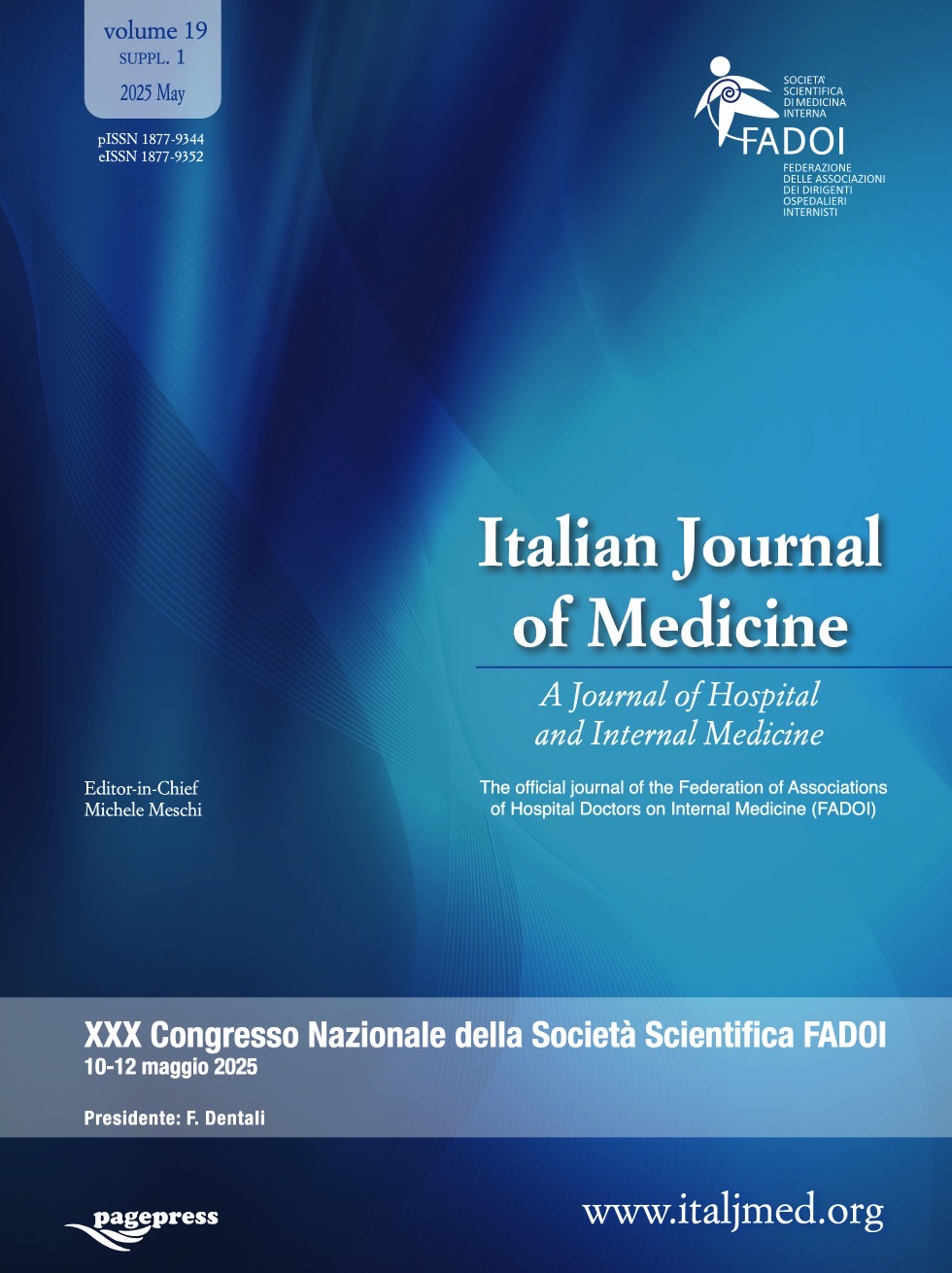XXX FADOI Italian Congress | 10-12 May 2025
25 August 2025
Vol. 19 No. 1(s1) (2025): XXX FADOI Italian Congress | 10-12 May 2025
P11 | Mycotic aortic pseudoaneurism due to group B Salmonella. Case report and review of literature
S. Barp1, P. Battisti2, R. Giudice3, M. Ballardini4, I. Arizaj1, R. Massaro2, P. Carfagna2 | 1Medicina Interna e malattie metaboliche, Policlinico Umberto I, Università La Sapienza, Roma, 2AO San Giovanni Addolorata, Medicina Interna, Roma, 3AO San Giovanni Addolorata, Chirurgia Vascolare, Roma, 4AO San Giovanni Addolorata, Microbiologia, Roma, Italy
Publisher's note
All claims expressed in this article are solely those of the authors and do not necessarily represent those of their affiliated organizations, or those of the publisher, the editors and the reviewers. Any product that may be evaluated in this article or claim that may be made by its manufacturer is not guaranteed or endorsed by the publisher.
All claims expressed in this article are solely those of the authors and do not necessarily represent those of their affiliated organizations, or those of the publisher, the editors and the reviewers. Any product that may be evaluated in this article or claim that may be made by its manufacturer is not guaranteed or endorsed by the publisher.
47
Views
0
Downloads







